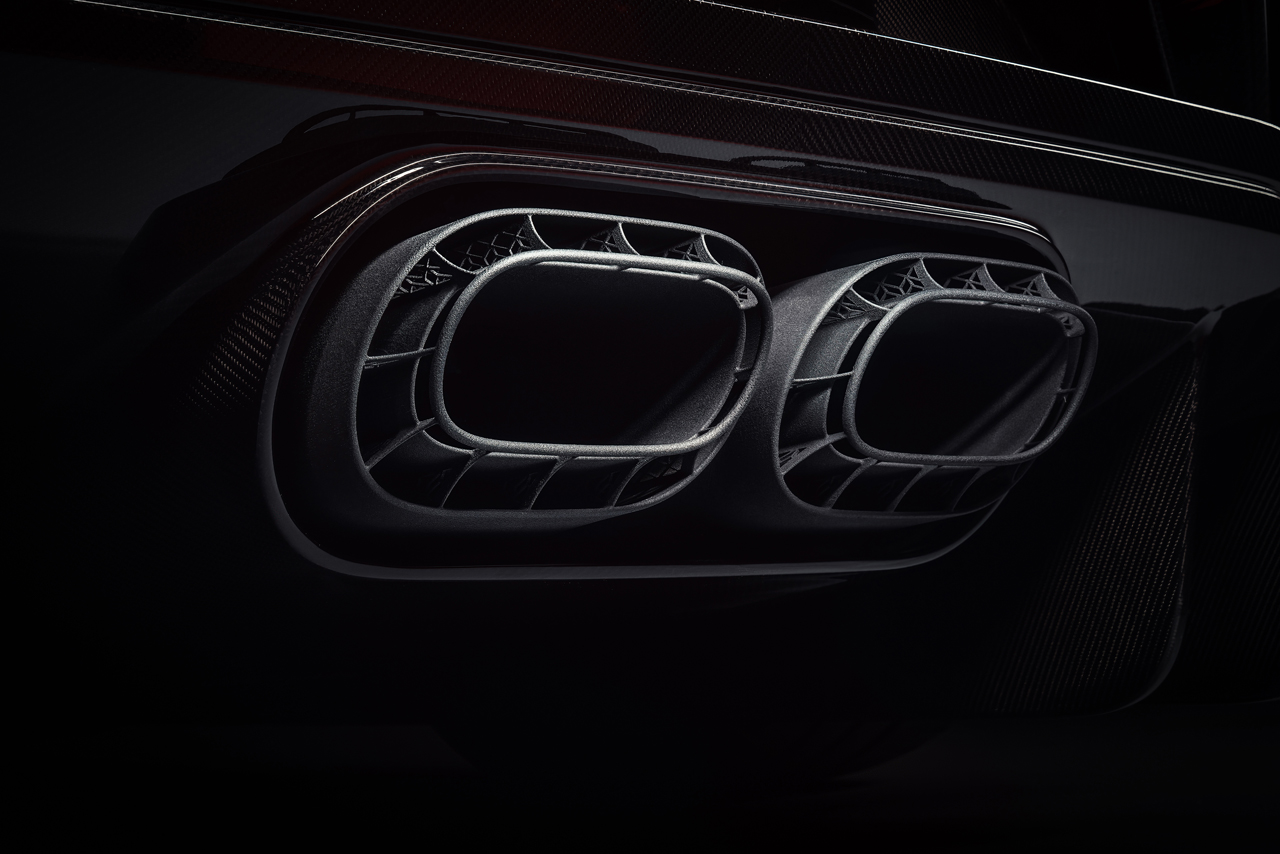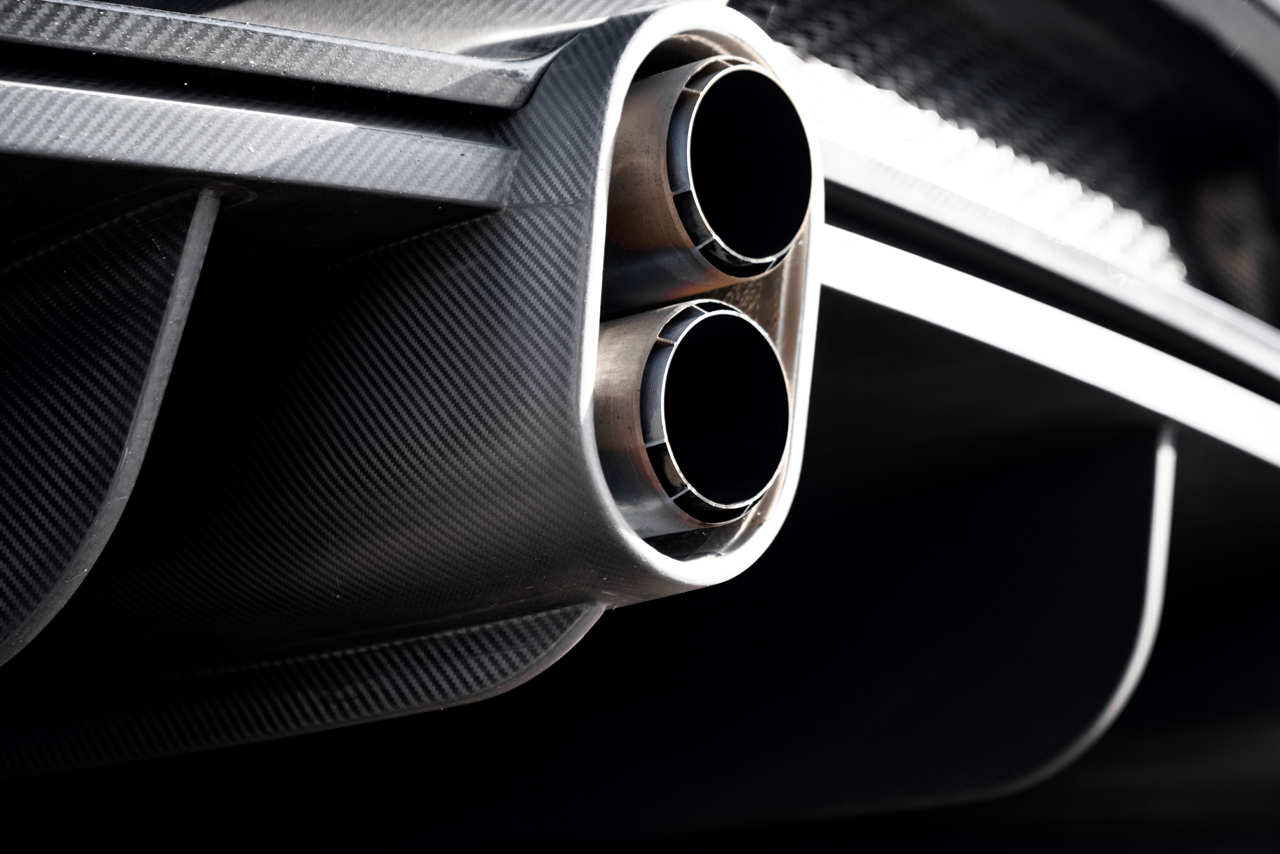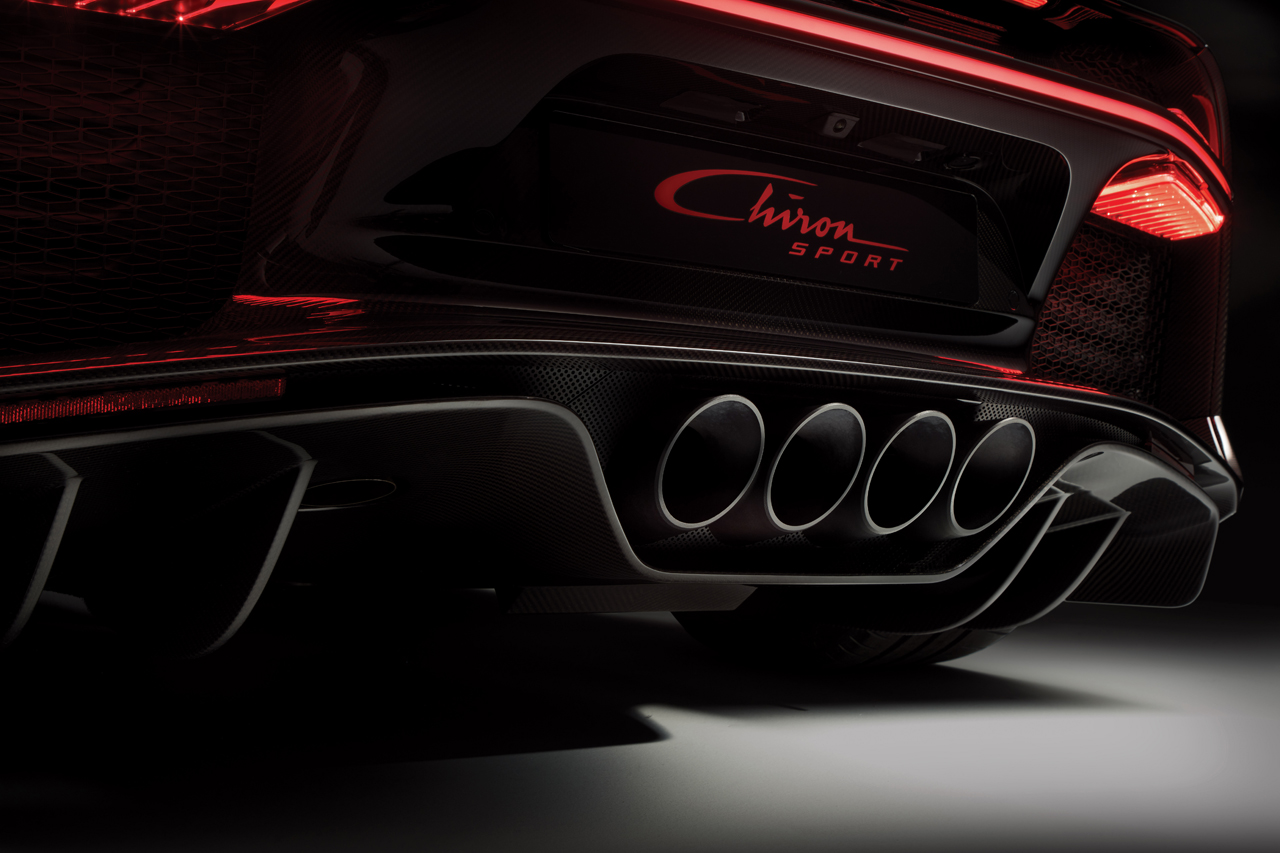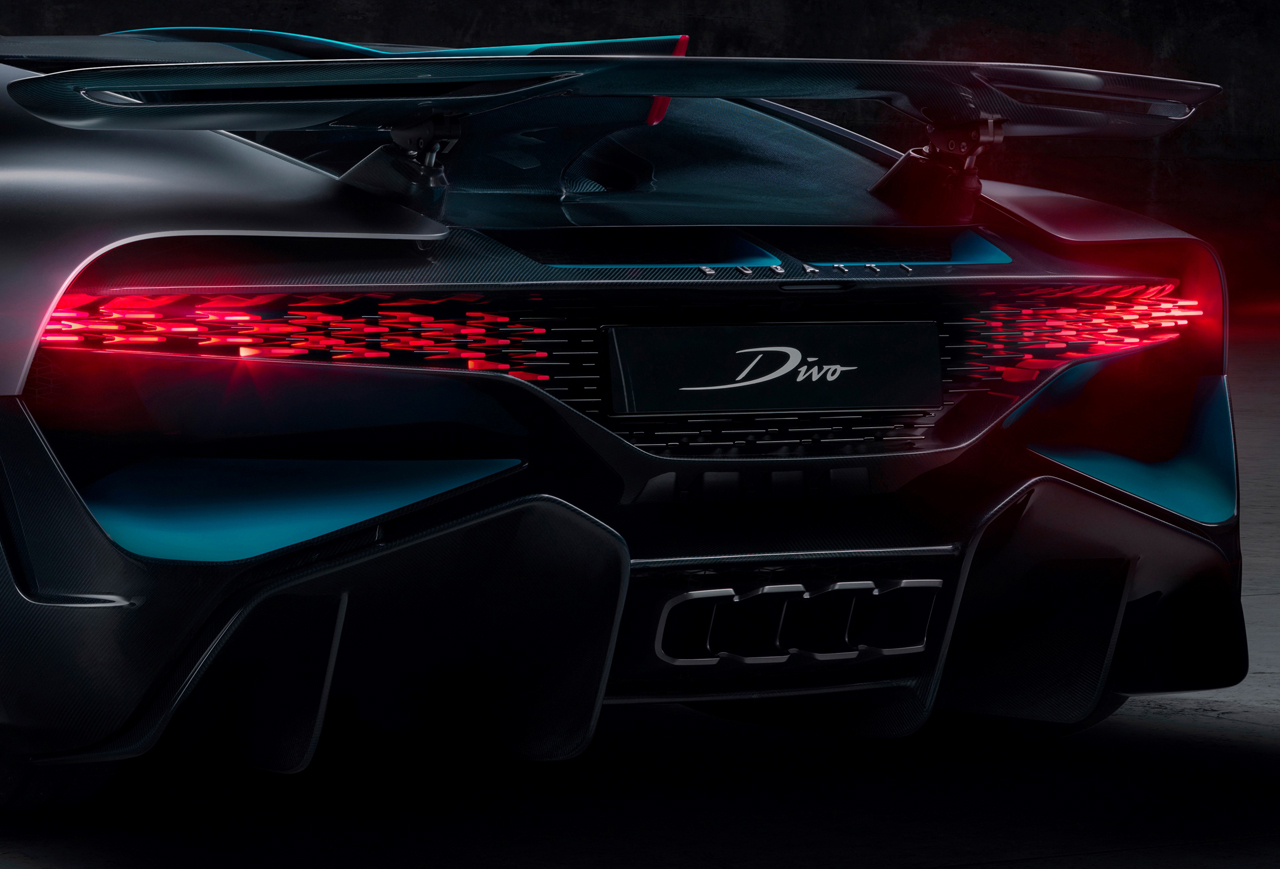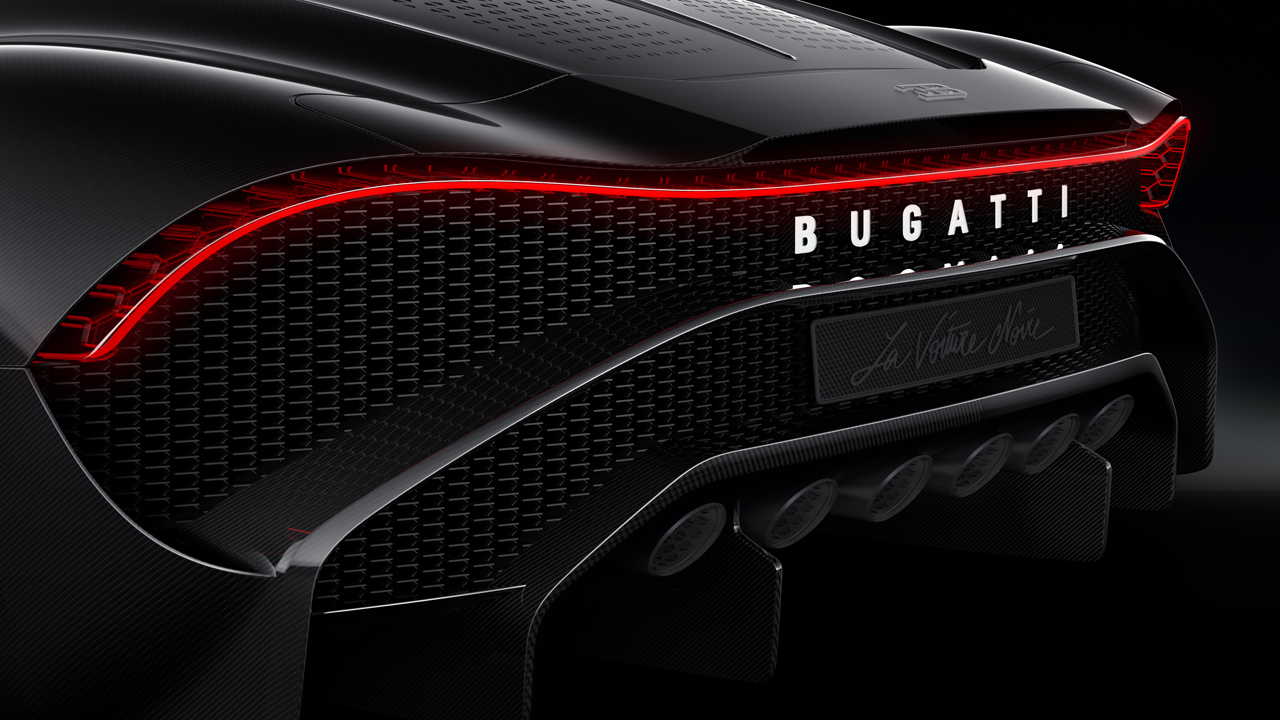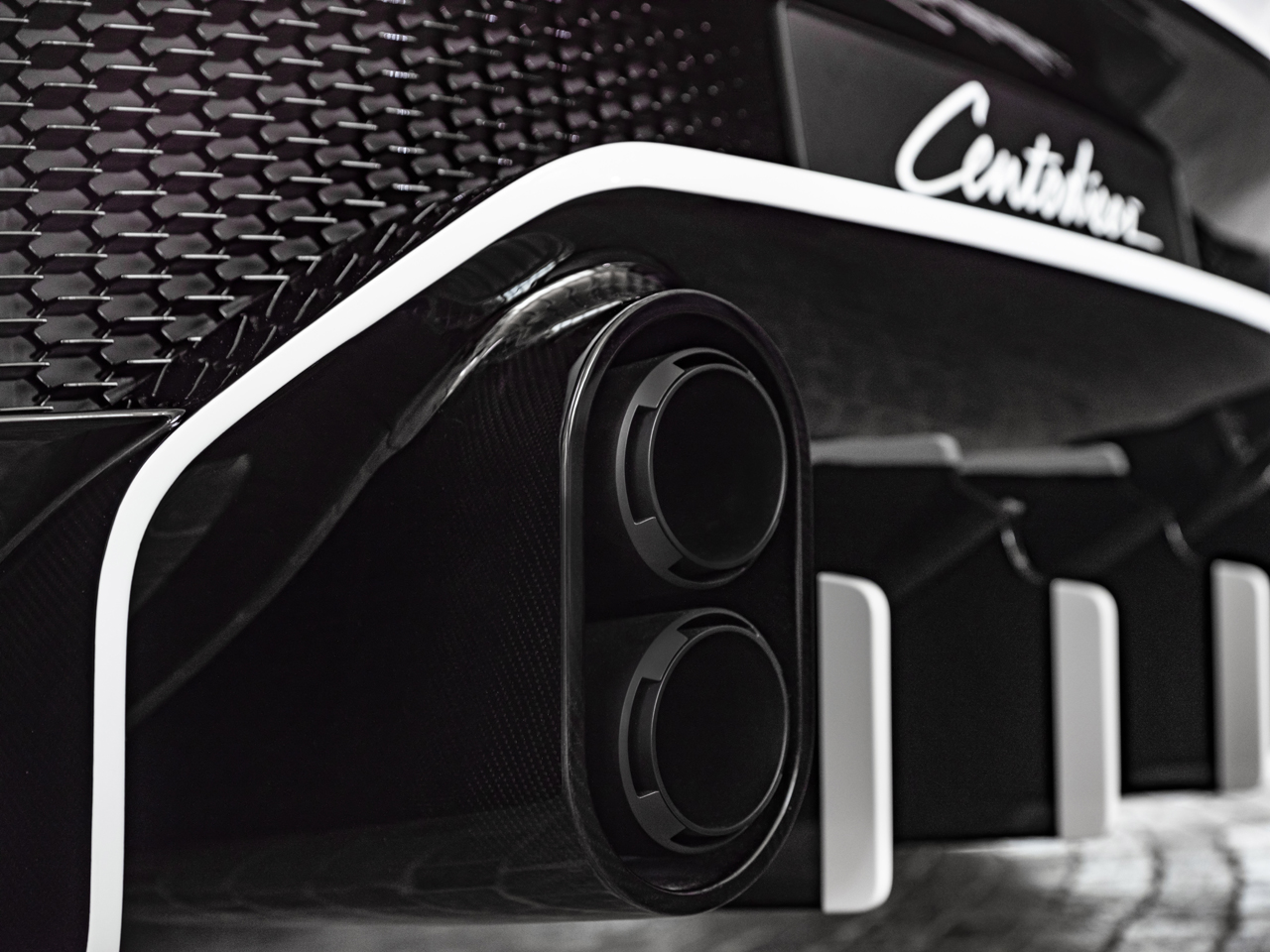Bugatti Talks About 3D Printing Use In Its Hypercar Range
Bugatti makes extensive use of advanced manufacturing techniques to make its incredibly high performing hypercars. One of the techniques that the automaker takes advantage of is 3D printing. It says it's able to use 3D printing to create products that are "as fine and accurate as a spider's web, yet as stable as a solid steel structure."Bugatti uses 3D printing on the Chiron Pur Sport and Chiron Super Sport 300+. The 3D printing technology is used to produce tailpipe trim covers that are made of titanium. While tailpipe trim covers aren't the most exciting parts of the car, the cover is the first visible part to be 3D printed metal that is officially approved for use on the roads.
The 3D printed trim covers measure 22 centimeters long by 48 centimeters wide by 13 centimeters high, and the trim cover weighs only 1.85 kilograms, including the grille and bracket, that makes the part 1.2 kilograms lighter than the cover used on the Chiron. The 3D printing process for the titanium parts uses a quartet of 400-watt lasers that simultaneously print titanium to produce the component.
The wall thickness at its thinnest point is 0.4 millimeters. Bugatti says that approximately 4200 layers of metal powder stacked on each other and are firmly fused. The team says that wherever possible, the trim cover on the Chiron Pur Sport is produced with a single layer to reduce weight further. Minimal material is possible thanks to a lattice structure that fills the cavity with numerous filigree struts.
Bugatti also uses a bionic honeycomb structure in the single-layer area to increase surface rigidity of walls. The structure gives even large components a high degree of surface stiffness. The cover can withstand temperatures of over 650 degrees Celsius to the double-layer outer wall. Bugatti says that it has been using 3D printing since 2018.

